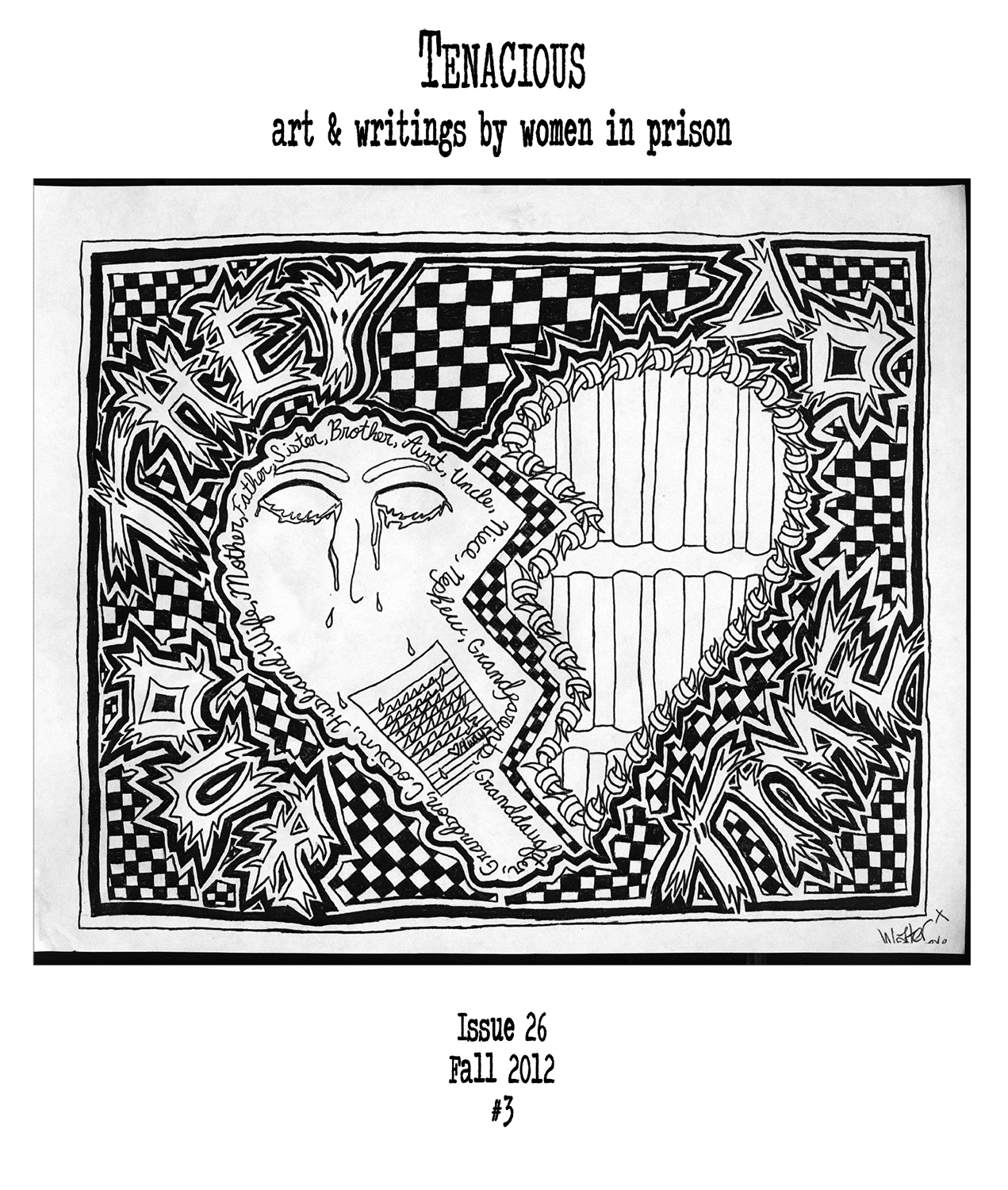I’m not the all-knowing anarchist. I’m just Lee, living day to day in a concrete cage while these life-stealing monsters try to shorten my life expectancy and decimate my hopes and dreams for the future. I’m just trying to leave something positive behind in the wake of my solitary confinement.”
– Lisa “Lee” Savage (Tenacious issue sixteen, 48)
Recently I found myself asking what exactly qualifies as a “special collection.” As a student researcher working for Archives & Special Collections at Santa Clara University, I used to be under the impression that “special collections” consisted of old or rare texts and artifacts. However, since we recently acquired of the complete collection of the zine Tenacious, my definition has somewhat shifted.

Tenacious is a publication that ran from 2004 to 2020 and featured articles, essays, art, and poems, as well as other works by incarcerated women around the United States. The stories in the zine touch on a variety of topics like spirituality, HIV/AIDS, and motherhood. Most importantly the narratives shed light on the suffering women face at the hands of the prison-industrial complex in the United States, experiences that rarely find any other outlet through which to be told. According to Victoria Law, the creator of the zine, “Zines and magazines can, to some limited extent, get into the prisons and raise awareness about issues and ideas that they may not have thought otherwise” (Introductory Zine, Tenacious Zine Box Set 2002 to 2020). Thanks to this publication, folks on the outside can finally know what challenges these women face by reading first-hand accounts. These challenges may be told directly to friends and family of the incarcerated but are rarely reported by mainstream media. To learn more about Law’s vision and passion for prison writing, check out episode 23 of the Beyond Prison podcast in where she was interviewed.

Beyond bringing awareness, this zine also connects incarcerated women all over the country and gives them a channel by which to communicate with each other. Under extreme circumstances, these women found a platform where they can encourage others going through something similar to persevere. While a lot of these women went through inhumane treatment, the fact that they display so much compassion to one another really stuck out to me.
I have preserved and conquered my fear to dream.”
– Melanie Schmid, “I Do Dare to Dream” (Tenacious, issue 3)
When I think back to my original question on what makes an acquisition a “special collection” and my preconceptions of the idea, I wondered about just how different Tenacious is to our other collections. It might be strange comparing this zine to things like the Mission Manuscripts, but the texts found in both collections offer a unique perspective during a specific time and place, and their formats inform us of their use. In the case of the Mission Manuscripts, they are overwhelming sheet-sized pieces of paper handwritten in Colonial Spanish with ink. In the case of Tenacious, they are laser jet printed on the most ubiquitous size of paper, 8 1/2 x 11, folded once, collated, and then stapled together because it is the most DIY option of publishing. Yet, Tenacious is still extremely rare–SCU Archives & Special Collections is one of the first libraries in the world to acquire the box set, according to Worldcat.org, and the box set is available in a limited edition only. Sealing the “specialness” is a a compartment at the bottom of the archival box, under every 4 1/4 x 6 1/2″ issue, which contains original, hand-written submissions to the zine. These submissions come with special terms of use: they cannot be copied, scanned, or otherwise reproduced. For these reasons, we want to store the Tenacious box set in a safer environment than the open stacks and look over its use. This ensures the issues stay together and the special terms of use are enforced.
Tenacious is an example of the vital information that independent or alternative media can contain. Not every single piece of archival text will be hand-bound with leather and written on vellum; sometimes they can just be pieces of paper folded in half to make a book and photocopied on a Xerox machine.

“The Top Ten Words of Advice/Facts” by Barrilee Gispert Bannister (Tenacious, issue 1)
- Always remember that a name, label or title is often highly over-exaggerated and widely inaccurate.
- Being the big tree in the forest only means begin crapped on, hit by lightning more and desired for lumber.
- Never start believing you are god-like, omniscient, omnipotent, invulnerable, or untouchable.
- Always remember the boomerang principle; what goes around comes around.
- Never forget human nature in everyone–we lie, steal, cheat, kill, lust, and far, look like crap in the morning and have bad breath.
- A careless move can kill you just as dead as an atomic bomb.
- Don’t charge the enemy without ammunition or support.
- Accept the fact that, in order to strike, you can be struck also.
- Superiority is not in politics, religion, race, economics or heredity. It is in the mind.
- Ships are made to sail; guns made to be fired; plants made to bloom. Do not forget what you were made for.
In a previous blog post covering American Prison Newspapers, we mentioned Tenacious and how reading one edition reared a multitude of questions. Although we have acquired all editions of the zine, we find ourselves asking more questions about what the nature of this publication shows us. To those who are interested in reading the collection for themselves, appointments can be made to consult the material through the Archives & Special Collections homepage. Perhaps you might be able to shed some light on our list of inquiries!
Header image: Tenacious Zine Box Set cover art

